Photographer’s Paradise: Capturing the Beauty of Nanxi River Ancient Villages
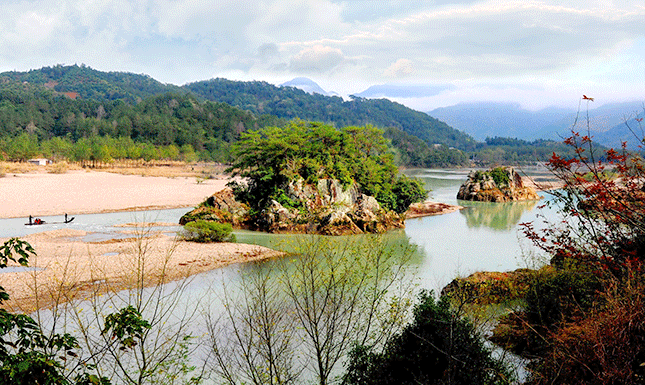
An Essential Guide to Visiting Nanxi River Ancient Villages
Nestled in the lush embrace of Zhejiang Province, the Nanxi River Ancient Villages offer an enchanting escape into China’s rich history and stunning landscapes. This picturesque region, characterized by its meandering river, verdant hills, and time-honored architecture, transports visitors back to a simpler era, where life flows as gently as the waters of the Nanxi itself.
As you wander through the ancient streets of villages like Yantou and Linkeng, you’ll be greeted by the sight of traditional stone houses adorned with intricately carved beams and vibrant lanterns, evoking a sense of nostalgia and tranquility. The air is filled with the sounds of nature, from the rustling of leaves to the gentle babbling of the river, creating a serene atmosphere perfect for exploration and reflection.
Outdoor enthusiasts will find plenty to keep them engaged, whether it’s hiking the well-maintained trails that wind through the surrounding hills or embarking on a bamboo rafting adventure, gliding along the crystal-clear waters of the river. Along the way, indulge in local delicacies at quaint eateries, or simply relax and soak in the breathtaking scenery that has inspired poets and artists for generations.
For travelers seeking a blend of culture, history, and natural beauty, the Nanxi River Ancient Villages promise an unforgettable experience—one that reveals the heart and soul of rural China. Prepare to be captivated by this hidden gem, where every corner holds a story, and every moment invites you to slow down and savor the beauty of life.
In This Guide
- An Essential Guide to Visiting Nanxi River Ancient Villages
- The Rich History and Legends of Nanxi River Ancient Villages
- Main Highlights: What You Absolutely Can’t Miss
- Planning Your Visit: A Practical Guide
- Tickets: Prices, Booking, and Tips
- How to Get There: A Complete Transportation Guide
- Local Cuisine and Accommodation Nearby
- Frequently Asked Questions
- Final Thoughts on Your Trip
The Rich History and Legends of Nanxi River Ancient Villages
Nestled within the enchanting landscapes of Yongjia County, the Nanxi River Ancient Villages are a testament to the rich tapestry of Chinese history and culture. These villages, with their intricate architecture and breathtaking scenery, offer a glimpse into a time when life was simpler, yet deeply connected to nature and tradition.
The history of the Nanxi River region dates back over a thousand years, with its roots intertwined with the rise of the Wu and Yue states during the Spring and Autumn period (770-476 BC). This area has long been a crossroads of trade and culture, where merchants and travelers would traverse the winding river, exchanging goods and stories. The river itself, with its crystal-clear waters and lush surroundings, has been revered not only for its beauty but also for its essential role in the agricultural prosperity of the region.
As you stroll through these ancient villages, you’ll encounter well-preserved examples of traditional Chinese architecture, characterized by wooden beams, elegant eaves, and ornate carvings that tell stories of the families that once called these homes. Each village has its own unique legends; for instance, the village of Yantou is famous for its ancient banyan tree, believed to be a guardian spirit that protects the inhabitants from misfortune. Local lore suggests that if you whisper your wishes to the tree, they will be granted.
Villagers here have preserved their customs and traditions across generations, often seen in their festivals and daily lives. The vibrant colors of lanterns during the Lantern Festival and the melodic sounds of local operas echo through the streets, inviting visitors to witness the living culture of the area. The craftsmanship in calligraphy and traditional music remains a significant part of the local identity, with many artisans dedicated to keeping these practices alive.
Moreover, the Nanxi River not only shapes the landscape but also enriches the folklore of the area. Tales of dragons and phoenixes intertwine with the river’s currents, inspiring local artists and poets. The legendary Dragon Head Waterfall, located nearby, is said to be the resting place of a dragon that once roamed the skies, protecting the people and ensuring their bountiful harvests.
Visitors to the Nanxi River Ancient Villages not only experience stunning vistas and serene paths but also embark on a journey through time, discovering the narratives that have shaped this remarkable part of China. Whether it’s the tranquil bamboo rafting on the river or exploring the quaint alleyways of the villages, every corner reveals a story waiting to be uncovered, reinforcing the profound connection between the land, its people, and their history.

Nanxi River Ancient Villages.
Main Highlights: What You Absolutely Can’t Miss
Exploring the Nanxi River Ancient Villages is a journey into a realm where nature’s beauty intersects with rich cultural heritage. This hidden gem in Yongjia County, Zhejiang, China, offers an array of experiences that will leave international travelers enthralled. Here’s what you absolutely can’t miss during your visit:
Scenic Bamboo Rafting on the Nanxi River
One of the most popular ways to experience the serene beauty of the Nanxi River is through bamboo rafting. Gliding down the gentle currents, surrounded by lush greenery and breathtaking karst landscapes, is both relaxing and invigorating. Opt for a traditional bamboo raft ride and enjoy the tranquility as you float past picturesque villages and hidden caves. Make sure to negotiate your trip duration and avoid motorized rafts for a more authentic experience.
The Stunning Waterfalls
Don’t miss the chance to hike up to the waterfalls in the area. The trails, well-maintained yet challenging, lead to breathtaking vistas. Travelers often take a cart to the top for a bit of a shortcut, but the descent on foot allows for a more immersive experience with nature. The sound of cascading water and the fresh air invigorate the senses, making this a highlight of any visit to the region.
Picturesque Ancient Villages
The villages along the Nanxi River are brimming with history and charm. Yantou Village is particularly noteworthy, showcasing traditional architecture and offering a glimpse into the local way of life. Strolling through the narrow lanes, you’ll encounter old stone houses adorned with intricate carvings and vibrant red lanterns. Linkeng and Yubei Villages are also must-visits, allowing travelers to soak in the tranquil atmosphere and perhaps enjoy a cup of local tea.
Hiking Trails and Nature Walks
For the more adventurous, the hiking trails around the river are a fantastic way to explore the stunning landscapes. Be prepared for some stair climbing, but the reward is well worth it: panoramic views of the surrounding mountains and valleys. The trails often lead to secluded spots perfect for a picnic or simply soaking in the natural beauty.
Exploring Cultural Heritage
The area is rich in cultural history, with several sites that reflect the local customs and traditions. Visit old courtyards where traditional operas were once performed and explore the remnants of past eras. Engaging with local artisans and trying your hand at traditional crafts can provide insight into the region’s heritage.
Culinary Delights
No visit is complete without sampling the local cuisine. Look for eateries in the villages serving regional specialties. From fresh river fish to hearty noodle dishes, the flavors are sure to delight. Don’t forget to indulge in local snacks while hiking or after a day of exploring.
Relaxation and Refreshments
After a day filled with adventure, take some time to unwind by the riverside. Many spots offer snacks and refreshing drinks, making it the perfect place to relax and reflect on your experiences. Whether enjoying an ice-packed drink or simply resting with a book, the serene environment enhances the relaxation.
Tips for Your Visit
- Timing: Try to visit during weekdays to avoid crowds, especially if you want to enjoy a peaceful experience in the villages.
- Transportation: Renting a bike or hiring a taxi van can help you navigate between the villages more easily.
- Respect Local Customs: Engage with the locals respectfully and be mindful of traditions, especially when visiting sacred sites.
The Nanxi River Ancient Villages provide a unique blend of adventure, culture, and relaxation. With stunning landscapes, rich history, and warm hospitality, it’s a destination that promises unforgettable memories for every traveler.
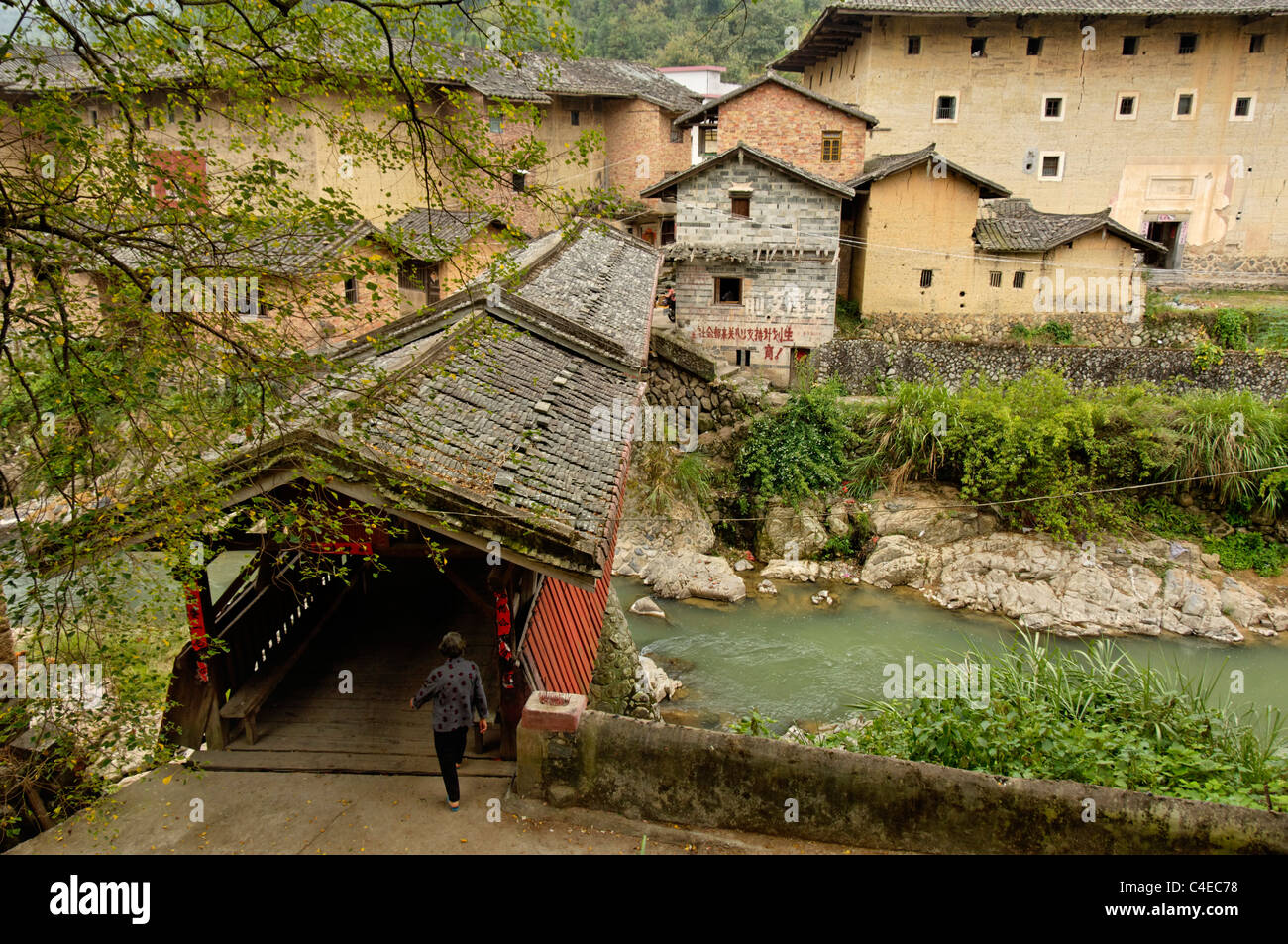
Nanxi River Ancient Villages.
Planning Your Visit: A Practical Guide
Planning Your Visit: A Practical Guide to Nanxi River Ancient Villages
If you’re looking to immerse yourself in stunning natural beauty and rich cultural heritage, the Nanxi River Ancient Villages in Zhejiang Province, China, offer an enchanting experience. This practical guide will help you navigate your visit to this picturesque region, ensuring you make the most of your time exploring its charming villages and scenic landscapes.
Getting There
The most convenient access point to the Nanxi River Ancient Villages is from Wenzhou, which is approximately 60 kilometers away. Here are a few transportation options:
-
By Bus: From Wenzhou Railway Station, take Bus 45 to reach your stop, then transfer to Bus 108. This route will take you to the “Anlanting” stop, where you can enjoy a short walk along the river to catch a ferry across. The ferry fare is a mere 2 yuan.
-
By Taxi: For a more direct option, consider hiring a taxi or a ride-sharing service. This will be more expensive but allows for greater flexibility and convenience.
-
By Private Tour: Many local agencies offer day tours that include transportation and guided experiences. This can be a hassle-free way to explore multiple villages in one go.
Best Time to Visit
-
Season: The best time to visit the Nanxi River region is during spring (March to May) and autumn (September to November) when the weather is mild, and the scenery is particularly vibrant. Summer can be hot and humid, while winter may bring chilly temperatures.
-
Weekdays vs. Weekends: If you prefer a quieter experience and fewer crowds, visiting on a weekday is highly recommended. Many local tourists flock to the area on weekends, so plan accordingly.
What to See and Do
-
Explore the Villages: Don’t miss the quaint charm of villages like Yantou, Linkeng, Cangpo, and Furong. Each village has its unique character, with traditional architecture and beautiful surroundings. Aim to spend 30 to 60 minutes in each village to appreciate their beauty without feeling rushed.
-
Hiking and Nature Walks: The area is known for its well-maintained hiking trails. Be prepared for some stair climbing, but rest assured that the stunning views are worth the effort. Trails often meander alongside the river, offering a chance to soak in the fresh air and breathtaking scenery.
-
Bamboo Rafting: Experience the tranquility of the Nanxi River on a bamboo raft. While prices can vary, ensure you negotiate with the operators to avoid any price-gouging. This leisurely activity allows you to enjoy the beauty of the river at your own pace.
-
Visit Scenic Spots: Don’t miss the nearby waterfalls and caves, such as the Dragon Cave. These natural wonders are perfect for photography and offer a refreshing escape into nature.
Dining and Refreshments
When hunger strikes, there are local eateries scattered throughout the villages that serve traditional Chinese dishes. It’s a great opportunity to sample local flavors. Be sure to try some regional specialties when you visit. For a quick snack, you can also find small kiosks and vendors selling refreshments along the trails.
Accommodations
While many visitors opt for day trips, if you’re looking to extend your stay, consider staying overnight in the area. There are a few guesthouses and hotels within the villages that offer a cozy and authentic experience, allowing you to enjoy the serene mornings and evenings after day-trippers have left.
Tips for a Smooth Visit
-
Language: English may not be widely spoken, so having a translation app on hand or learning a few basic phrases in Mandarin can enhance your experience.
-
Cash: While some places may accept mobile payments, it’s advisable to carry cash (RMB) for small purchases, especially in smaller villages.
-
Stay Hydrated: Bring water with you, especially when hiking, as it can get warm during the day.
-
Respect Local Customs: Be mindful of local traditions and practices. A respectful demeanor goes a long way in ensuring a positive interaction with residents.
With its captivating blend of nature and culture, the Nanxi River Ancient Villages promise an unforgettable adventure. Whether you’re hiking the trails, enjoying a peaceful bamboo raft ride, or simply soaking in the scenery, this hidden gem in Zhejiang Province is sure to leave a lasting impression.
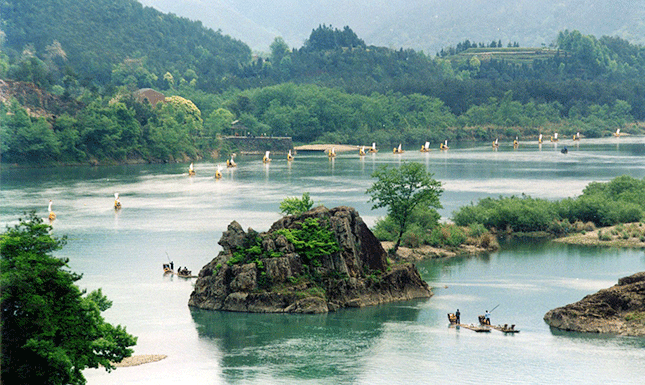
Nanxi River Ancient Villages.
Tickets: Prices, Booking, and Tips
When planning your visit to the enchanting Nanxi River Ancient Villages, understanding the ticketing options, prices, and booking tips can enhance your experience significantly. Here’s everything you need to know to make the most of your journey.
Entry Fees
Access to the scenic areas along the Nanxi River generally involves a modest entry fee. While prices can vary based on the specific village or activity, expect to pay approximately 30-50 RMB (around $4-$7 USD) for entrance to the various scenic spots. Bamboo rafting experiences may come with separate charges, typically starting around 150-300 RMB (approximately $22-$45 USD) depending on the duration and the operator.
Booking Tickets
-
On-Site Purchase: Most visitors find it convenient to purchase their tickets upon arrival at the entrance of each village. There are ticket booths located at major access points, and staff members can assist you in English, although it’s beneficial to have some basic phrases in Mandarin.
-
Online Booking: For those who prefer to plan ahead, some tour companies and travel platforms offer online booking options. Websites like Trip.com or local tour operators may provide packages that include transportation, entry fees, and guided tours.
-
Tour Packages: Consider booking a guided tour that covers multiple villages and activities, such as bamboo rafting or hiking. These tours often include all necessary fees and can provide valuable insights into the history and culture of the area.
Tips for a Smooth Experience
-
Visit on Weekdays: To enjoy a more tranquil experience and avoid the crowds, plan your visit on weekdays. The weekends tend to be busier, especially with local tourists.
-
Bring Cash: While some vendors may accept digital payments, it’s advisable to carry cash for entry fees, snacks, and souvenirs, as not all places are equipped for card transactions.
-
Timing Your Visit: The Nanxi River area is open daily from 7:30 AM to 6:00 PM. Arriving early allows you to enjoy the serene morning atmosphere and take advantage of cooler temperatures for hiking.
-
Check for Seasonal Events: Occasionally, the area hosts cultural festivals or events that may require separate tickets or reservations. Check local listings or inquire at your hotel to ensure you don’t miss out on unique experiences.
By keeping these details in mind, you’ll be well-prepared to explore the captivating landscapes and rich history of the Nanxi River Ancient Villages. Enjoy your adventure!
How to Get There: A Complete Transportation Guide
Visiting the picturesque Nanxi River Ancient Villages can be a delightful adventure, but getting there may require some planning, especially for international travelers. Here’s your guide to navigating the transportation options available to reach this enchanting destination.
Getting to Nanxi River Ancient Villages
1. Arrival in China
Most international travelers will first arrive in China through major cities such as Shanghai, Beijing, or Guangzhou. From these cities, you can reach Wenzhou, the nearest major city to Nanxi River, via flight or train.
- By Air:
- Fly into Wenzhou Longwan International Airport (WNZ), which serves both domestic and international flights.
-
Alternatively, consider flying into Hangzhou Xiaoshan International Airport (HGH) or Ningbo Lishe International Airport (NGB) and then taking a train or bus to Wenzhou.
-
By Train:
- High-speed trains operate frequently from cities like Shanghai, Hangzhou, and Nanjing to Wenzhou. The journey from Shanghai to Wenzhou takes approximately 4-6 hours, depending on the train.
2. From Wenzhou to Nanxi River
Once in Wenzhou, you will need to travel to the Nanxi River Ancient Villages, located about 60 kilometers north of the city.
- By Bus:
- Head to the Wenzhou Bus Station (also known as the Wenzhou Central Bus Station). Buses to Yongjia County, where the Nanxi River is situated, run regularly.
-
Look for buses heading to Yongjia or directly to Nanxi. The trip takes about 1-1.5 hours and costs around 20-30 RMB (approximately $3-5).
-
By Taxi:
-
Taxis are available and can be a convenient option if you prefer a direct route. The fare may range from 150-200 RMB ($20-30) depending on traffic.
-
Ride-Sharing Apps:
- Apps like Didi Chuxing are widely used in China and can provide a comfortable means of transportation. Simply input your destination as “Nanxi River” or “Yongjia” to locate a nearby driver.
3. Navigating Within the Villages
Once you arrive in the vicinity of Nanxi River, getting around the ancient villages is relatively straightforward.
- Walking:
-
Most of the villages can be explored on foot, allowing you to immerse yourself in the local scenery and culture. Comfortable walking shoes are recommended, as some paths may be rugged.
-
Local Transport:
- In some areas, you may find electric carts or small vans offering transportation services between villages for a small fee. Negotiate the fare beforehand to avoid misunderstandings.
4. Planning Your Visit
- Best Time to Visit:
-
Weekdays tend to be less crowded, allowing for a more leisurely experience. If possible, avoid weekends and public holidays to sidestep the rush of local tourists.
-
Stay Connected:
- While navigating, having a local SIM card or portable Wi-Fi device can be invaluable for using maps and translation apps, especially if you don’t speak Chinese.
5. Alternative Options
If you’re feeling adventurous, consider joining a guided tour that includes transportation from Wenzhou to Nanxi River and the surrounding villages. This can simplify logistics and provide insightful context about the area’s rich history and culture.
With this transportation guide, you’re well-equipped to embark on your journey to the beautiful Nanxi River Ancient Villages. Enjoy the stunning landscapes, rich culture, and serene ambiance that this hidden gem has to offer!
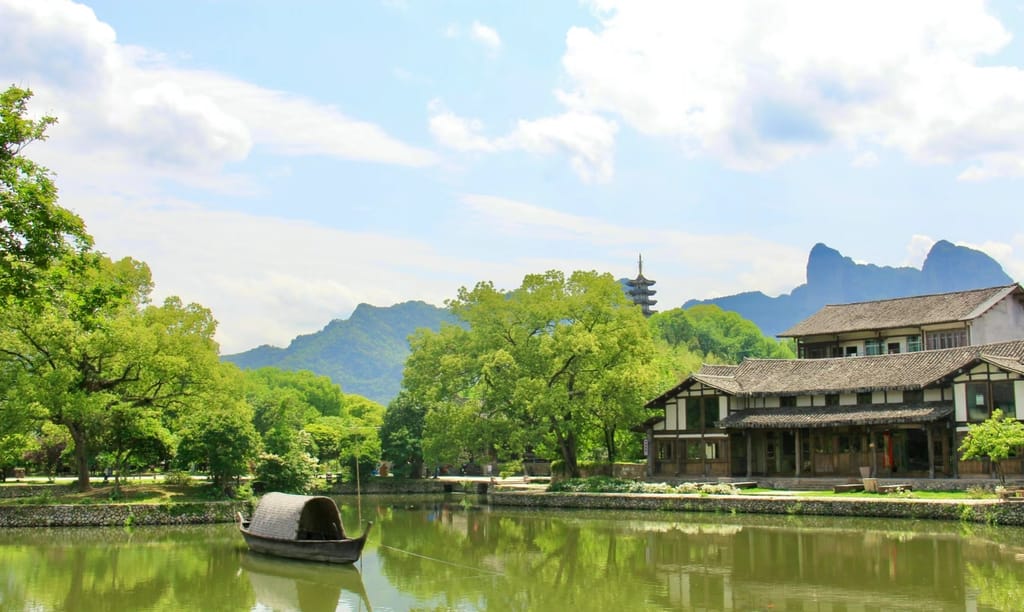
Nanxi River Ancient Villages.
Local Cuisine and Accommodation Nearby
When visiting the enchanting Nanxi River Ancient Villages, your adventure isn’t complete without indulging in the local cuisine and staying in nearby accommodations that enhance your experience.
Culinary Delights
The area surrounding Nanxi River is rich in flavors and traditional dishes that reflect the local culture. Be sure to try:
-
Wenzhou-style Dumplings (Wenzhou Jiaozi): These are a must-try when in the region. Often filled with various meats and vegetables, they are best enjoyed steamed or pan-fried at local eateries.
-
Bamboo Shoots: Fresh bamboo shoots are a local specialty, often stir-fried with garlic or served in a savory broth. Look for restaurants that feature these seasonal delights, especially in spring.
-
Stir-fried River Fish: Given the proximity to the river, you’ll find many restaurants serving fresh fish prepared in traditional styles, such as sweet and sour or spicy.
For a casual dining experience, Xiao Shi Indian Restaurant, located just a short distance from the river, is highly rated and offers a unique twist with its flavorful Indian dishes, perfect after a day of exploring.
Where to Stay
When it comes to accommodation, you’ll find a variety of options that cater to different preferences and budgets, all within a reasonable distance from the ancient villages:
-
Nanxi River Resort Hotel: Nestled near the river, this hotel provides a serene escape with stunning views of the water and mountains. The resort features comfortable rooms, a restaurant serving local cuisine, and easy access to hiking trails along the river.
-
Linkeng Ancient Village Guesthouse: For a more authentic experience, consider staying in a family-run guesthouse in Linkeng Village. Here, you can enjoy home-cooked meals, warm hospitality, and immerse yourself in the local culture.
-
Yantou Village Homestay: This homestay option offers cozy accommodations with a personal touch. Guests can enjoy traditional meals and participate in village activities, making it a perfect choice for those looking to connect with the local community.
Each of these options provides an excellent base from which to explore the scenic beauty and rich history of the Nanxi River and its ancient villages. Whether you’re savoring local delicacies or relaxing at your chosen accommodation, your visit to this picturesque region will surely be unforgettable.
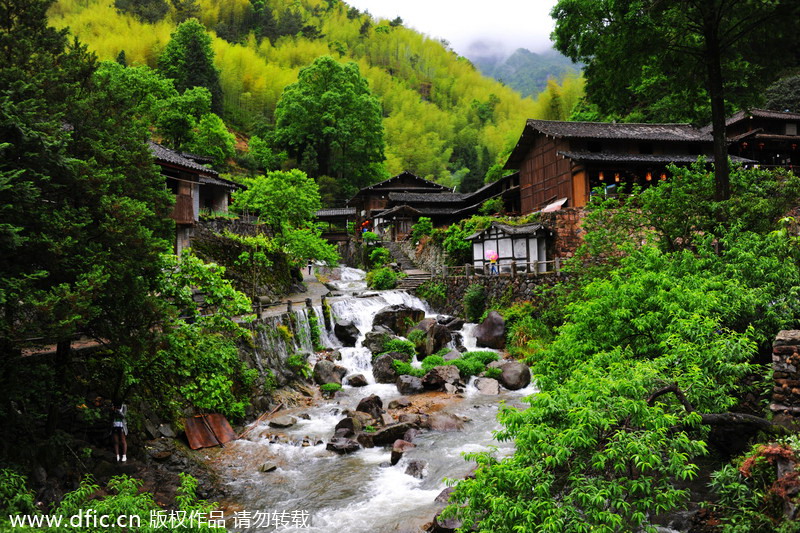
Nanxi River Ancient Villages.
Frequently Asked Questions
-
What is the best time to visit the Nanxi River Ancient Villages?
The ideal time to explore the Nanxi River Ancient Villages is during spring (March to May) and autumn (September to November). The weather is mild, and the natural scenery is at its best, with blooming flowers or vibrant fall colors. Avoid weekends if possible, as they tend to get crowded. -
How do I get to the Nanxi River Ancient Villages from Wenzhou?
From Wenzhou, take Bus 45 to a stop where you can transfer to Bus 108. Ride this bus to the “Anlanting” stop, then walk to the ferry crossing the river, which costs around 2 yuan. After crossing, you can find local buses that connect to various villages. -
Are there accommodations near the Nanxi River?
While there are limited accommodation options directly in the ancient villages, nearby towns offer guesthouses and hotels. It’s advisable to book in advance, especially during peak travel seasons, to ensure a comfortable stay. -
What activities can I enjoy at Nanxi River?
Visitors can enjoy a variety of activities including hiking along the scenic trails, bamboo rafting on the river, exploring the ancient villages, and visiting waterfalls. Make sure to try local snacks and enjoy the peaceful ambiance. -
Do I need to know Mandarin to visit the area?
While some signs and locals may understand basic English, knowing a few Mandarin phrases can significantly enhance your experience. It is especially helpful for navigating transportation and engaging with locals. -
What should I wear while exploring the villages?
Comfortable walking shoes are a must, as you will encounter many trails and stairs. Dress in layers, as temperatures can fluctuate throughout the day. Don’t forget a hat and sunscreen for sun protection, especially during summer. -
Is it advisable to hire a guide?
Hiring a local guide can enrich your experience by providing insights into the culture and history of the villages. However, if you’re comfortable with navigation and language, exploring independently is also a rewarding option. -
What are some nearby attractions to explore after visiting the villages?
After visiting the Nanxi River Ancient Villages, consider exploring Yandang Mountain, known for its stunning landscapes and hiking trails, or take a boat trip to nearby scenic spots. The area is rich in natural beauty and cultural heritage, making for a delightful extended visit.
Final Thoughts on Your Trip
As you reflect on your journey through the enchanting Nanxi River Ancient Villages, it becomes clear that this region is not just a destination but a treasure trove of experiences waiting to be discovered. The harmonious blend of stunning natural landscapes, rich cultural heritage, and the tranquil flow of the river creates an ambiance that is both refreshing and rejuvenating.
Whether you spent your days hiking the scenic trails, meandering through the charming villages, or indulging in local delicacies, each moment spent here offers a unique insight into the timeless beauty of rural China. The laughter of villagers, the whispering breeze through the bamboo groves, and the picturesque views will linger in your memory long after you leave.
As you pack your bags and prepare for your next adventure, carry with you the spirit of Nanxi—an invitation to slow down, connect with nature, and appreciate the stories woven into the fabric of everyday life. Let the serenity of the Nanxi River and its ancient villages inspire your future travels, reminding you that the world is full of hidden gems waiting to be unveiled. Safe travels!